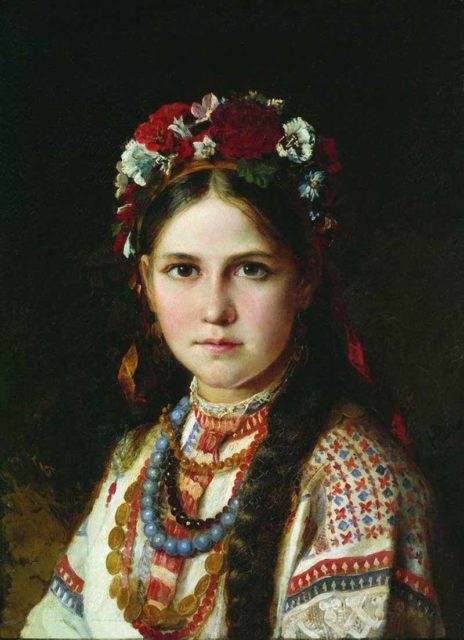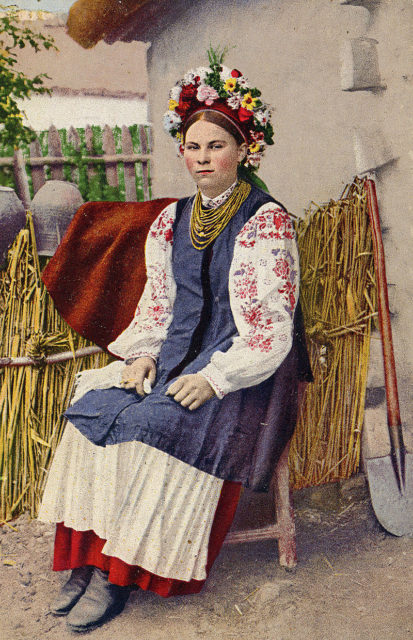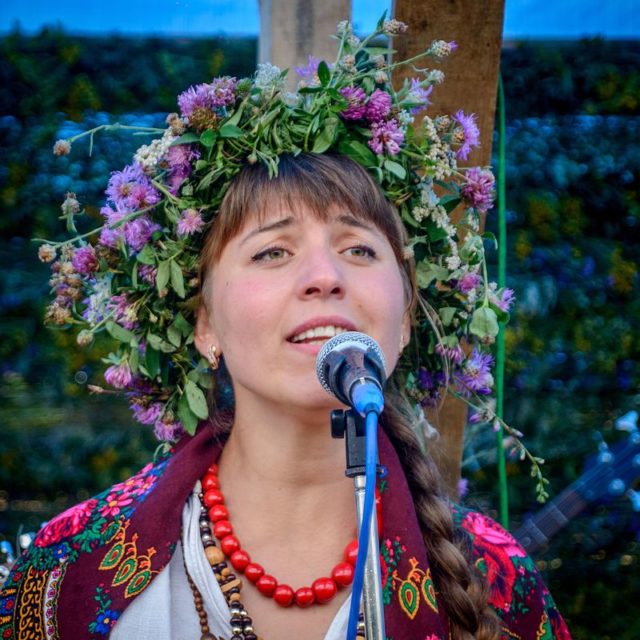The ongoing conflicts around the world are shaping our understanding of the modern society in a number of ways, especially the way in which people perceive traditions and national heritage.
Nowhere else this pro-traditional surge is more visible than in the fashion industry of Ukraine, where national pride has been on the increase since the Russian military incursions into the region in 2014.
The wave of support for home-grown artists and designers adhering to a more locally inspired approach to their work is one the rise. Ukraine’s people have rallied around their country’s rich cultural and artistic traditions, which has served as a focal point and catalyst for the recent surge in national spirit and morale. Perhaps the most blogged about and focussed upon aspect Ukrainian’s folk-tradition revival is the wreathed headdress known locally as Vinok.

There has been a dramatic increase in the sale of Vinoks all over the country; in Kiev, you can find lines of these wreaths on the stalls in markets and bazaars.
Traditionally, the Vinok is worn by young and unmarried girls as a symbol of purity. In modern society, it is worn as a cultural symbol on festive occasions and holy days.
Since the revolution, the exposure received by the headdress is so immense that more and more people are now seen wearing Vinoks in wedding ceremonies. It has now become a bit of a challenge to determine whether it was the widespread use of the Vinok, triggered post-revolution, that led to the media frenzy, or vice versa. However, one thing is certainly obvious; that the tenuous geo-political situation of the region has brought ordinary Ukrainians together, who are now looking inwards for solace in the time of great upheaval.

A number of photographers are now conducting photo shoots of modern women wearing the legendary headdress in order to convey a message of national pride and tranquillity. The fact that Vinok has emerged from a multitude of other symbols to become the most recognizable icon of Ukrainian nationalism is a testament to its simplicity in terms of production.
The headdress can be personalized according to the wearer’s individual taste, with a number of different materials used to make it and a huge amount of options available when it comes to decoration.

The headdress has now taken on strong political connotations of national pride and representation. When the Motherland Monument, which was built in the Soviet era, was decorated with a massive Vinok made out of poppies, the message was very clear; that peace is prevalent and it is the desire of the people that wars must be nothing more than a nightmare from the past.
